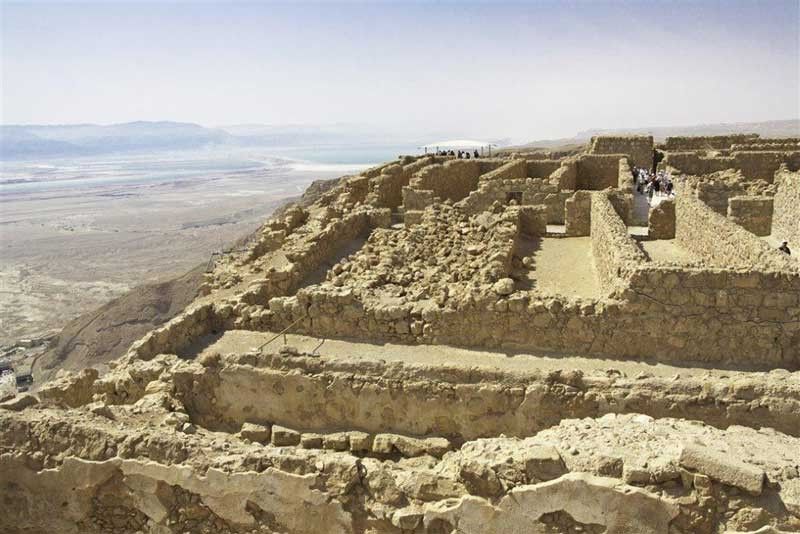Desert sojourn

I didn’t realize trekking through the desert was part of our Israel tour; which was just as well, so there was no chance to back out.
Our brains must have been so fried by the uncompromising noonday sun I doubt any one of us retained much of what our guide Ikey told us about the palace that Herod the Great built at Masada, at the southern end of the Judean Desert, overlooking the Dead Sea.
We visited at the height of the Israeli summer, not peak tourist season (that’s later in the year when the weather is pleasant); on a positive note, that meant no crowds, which allowed us to better appreciate the sights. But it is only now, in the comfort of my office, that I have come to really appreciate the significance of Masada.
Masada was inscribed as a UNESCO World Heritage Site in 2001. Due to its re- moteness and its harsh climate – it can get as hot as a bone-drying 43oC – the palace complex remained largely untouched for centuries, until it was rediscovered in 1828.
There is now a cable car and visitors’ center, but these are just in the lower reach- es of this majestic fortress. The rest of the way to the top is an arduous trek that enhances the realization of what a feat of engineering and construction this must have been. Herod’s careful planning provided the royal citadel with food supplies, a really ingenious water system (most important!) and near impregnable defenses that for years withstood the mighty Roman forces.
Nearly a century after Herod built his citadel, a band of 960 Jewish resistance fighters took refuge in this mountaintop fortress and successfully resisted the Ro- mans. In 73 AD, tired of being humiliated by this ragtag band of rebels, the Roman legions surrounded Masada and painstakingly built a siege ramp – faint remnants of which can still be seen – and breached the fortress’ wall. With their firm re- solve “never to be servants to the Romans, nor to any other than to God himself, who alone is the true and just Lord of mankind...” the Jewish fighters chose mass suicide rather than surrender. Since Judaism prohibits suicide, historians reported that they drew lots and killed each other. This dramatic episode was made into a mini-series (starring Peter O’Toole) in 1981.
My reward for “conquering” Masada was a delicious lamb shawarma and a $4 can of ice cold Coca-Cola when we got back to the visitors’ center.
But more rewards awaited us as we headed down to the Dead Sea, the lowest point on earth at 423 meters below sea level. Water from the Jordan River flows down the Jordan Valley and, since it is so low and has nowhere to go, the water evaporates, leaving the salt behind.
The high salt concentration – at 34 percent it is nearly ten times saltier than ocean water – makes floating easy, almost mandatory (it is quite a task to get on your feet), but be warned: it is possible to drown in the Dead Sea – though not in the usual manner of drowning – while it is quite impossible to swim in its hyper-dense waters.
But alas, the Dead Sea is shrinking, alarmingly, with the water level dropping by about a meter a year. Farmers upstream have been redirecting the flow of the Jordan River for irrigation, and harvesting the mineral-rich waters have added to the loss. Scientists warn that if no intervention is done, the Dead Sea could disappear by 2050. Fortunately, the Israeli government has stepped in with measures to keep the Dead Sea from dying out.
Meanwhile, even as the surface area of the Dead Sea has noticeably shrunk, tourists continue to descend on what is actually a salty lake. Cleopatra famously took note of its health and beauty benefits, and today its mineral-rich black mud is sought after as therapeutic and cosmetic treatments. We thought we’d give ourselves a beauty treatment as we were floating but, unable to find black mud in the lake, we were forced to buy packs of mud (5 shekels each) from the nearby mall and give them as pasalubong.
Hotels, resorts and spas line the shores of the Dead Sea, and it doesn’t help that most if not all of these establishments pump water from the Dead Sea into pools and baths in their premises, offering their guests the benefits of the therapeutic waters in safety and comfort.
- Latest
- Trending

















